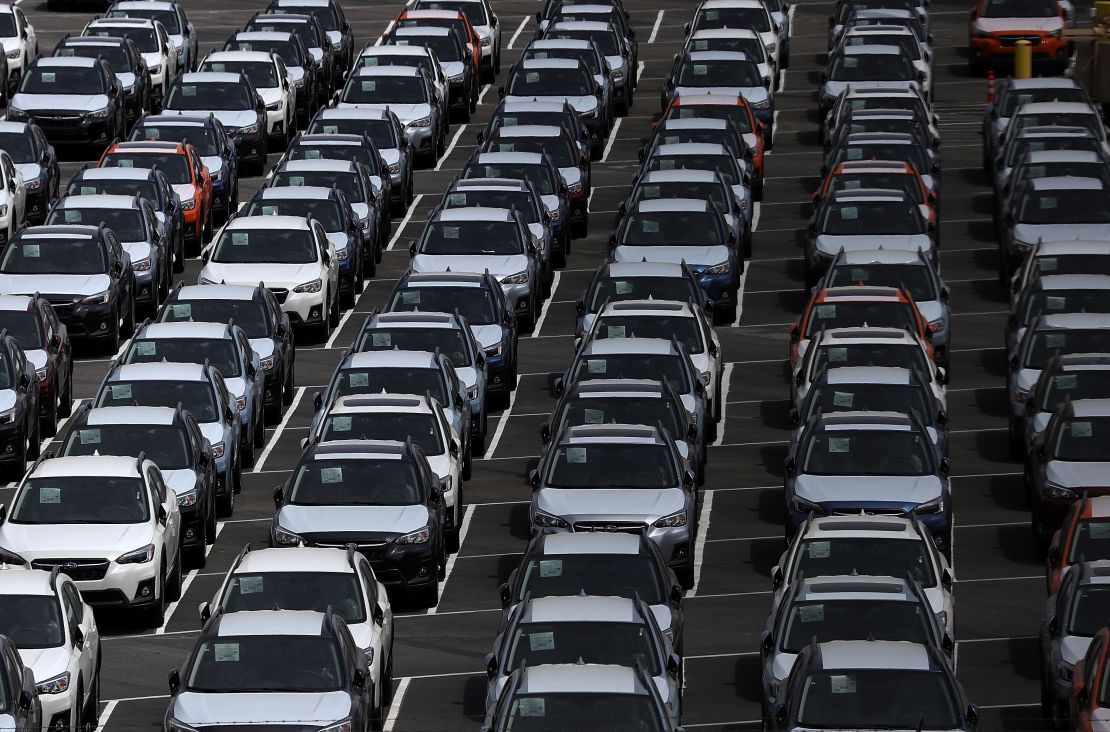The Trump administration is preparing another round of tariffs on Chinese goods worth $200 billion, ramping up the US-China trade war.
Trade Representative Robert Lighthizer on Tuesday released a list of thousands of additional goods that could face 10% tariffs after a public comment period. It includes fruit and vegetables, handbags, refrigerators, rain jackets and baseball gloves.
The move comes after the United States imposed 25% tariffs on Chinese goods worth $34 billion last Friday. Beijing immediately responded with its own tariffs on US goods worth $34 billion.
Tuesday’s action makes good on a threat President Donald Trump made last month. He directed Lighthizer to identify $200 billion in Chinese goods for tariffs if China retaliated against US penalties that are meant to punish the country for intellectual property theft.
Related: China says the US has started ‘the biggest trade war’ in history
“China apparently has no intention of changing its unfair practices related to the acquisition of American intellectual property and technology,” Trump said in June. “Rather than altering those practices, it is now threatening United States companies, workers, and farmers who have done nothing wrong.”
The retaliatory tariffs that China enacted Friday targeted US cars and major agricultural goods, such as soybeans and meat.
China’s Commerce Ministry said Wednesday that the Trump administration’s announcement of new measures was “unacceptable.” It warned that China would have to respond with “necessary countermeasures” without providing details.
“The action from the US is hurting China, hurting the whole world and also hurting the US itself,” the ministry said in a statement.

The United States is already working on a second wave of tariffs on Chinese goods worth $16 billion. The tariffs announced Tuesday would be the third wave. They would go into effect sometime after August 30.
“Rather than address our legitimate concerns, China has begun to retaliate against US products,” Lighthizer said in a statement. “There is no justification for such action.”
The United States remains willing to engage in negotiations with China on the issues at hand, he added.
Related: China stocks slump as US steps up trade war
But senior Trump administration officials said on a call with reporters Tuesday that so far, the two sides haven’t gotten anywhere.
“They continue to insist the problems we’ve identified are not real problems,” a senior administration official said.
The official added that China has not been prepared to talk about Made in China 2025, a government plan to make the country a global leader in industries of the future such as robotics, electric cars and computer chips.
The policy is a top concern for US officials. However, analysts say there’s little chance China will back down on the plan, which it considers crucial for developing its huge economy.
“The threat of more trade barriers is unlikely to sway China from its plan to make its domestic chip industry self-reliant, and to create a strong supply chain as a key enabler for innovation in other technologically intensive industries,” analysts at BMI Research said in a note to clients Tuesday.
Related: US soybean farmers say China tariffs could result in ‘serious damage’
It wasn’t immediately clear how China would respond to the new tariff list. When Trump first threatened last month to target another $200 billion of Chinese products, Beijing said it would be “forced to strike back hard, and launch comprehensive measures that match the US move in quantity and quality.”
But China also faces difficulties in retaliating directly: it ships far more goods to the United States ($506 billion last year, according to US figures) than come back in the opposite direction ($130 billion).
Analysts say the Chinese government could target trade in services between the two countries, such as tourism and education, or seek to make life difficult for big American companies operating in China.
Related: The trade war is making these products more expensive
Tuesday’s announcement was met with backlash from some quarters. Senate Finance Committee Chairman Orrin Hatch called it “reckless,” adding that the tariffs were “not a targeted approach.”
“We cannot turn a blind eye to China’s mercantilist trade practices, but this action falls short of a strategy that will give the administration negotiating leverage with China while maintaining the long-term health and prosperity of the American economy,” he said in a statement.
The National Retail Federation, an industry group, warned about the impact on prices from the new measures.
“Tariffs on such a broad scope of products make it inconceivable that American consumers will dodge this tax increase as prices of everyday products will be forced to rise,” David French, the group’s senior vice president for government relations, said in a statement.
Even more tariffs could be on the way. Trump said in June that the United States would be willing to enact a fourth round of tariffs on goods worth $200 billion if China retaliated yet again. He has not formally directed Lighthizer to prepare that list.
–CNN’s Jethro Mullen, Phil Mattingly and Nanlin Fang contributed to this report.















